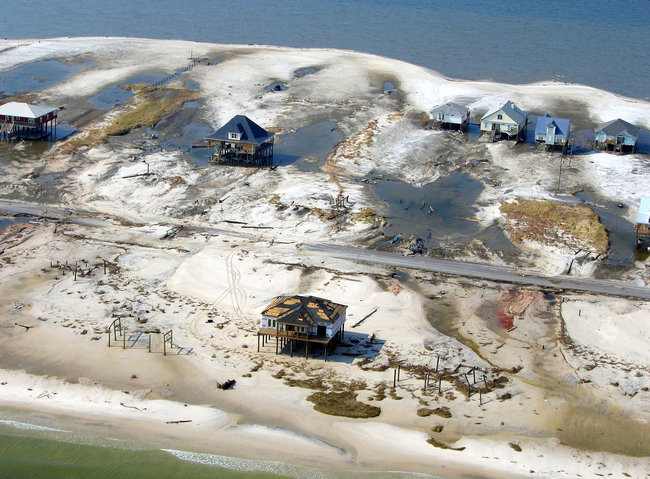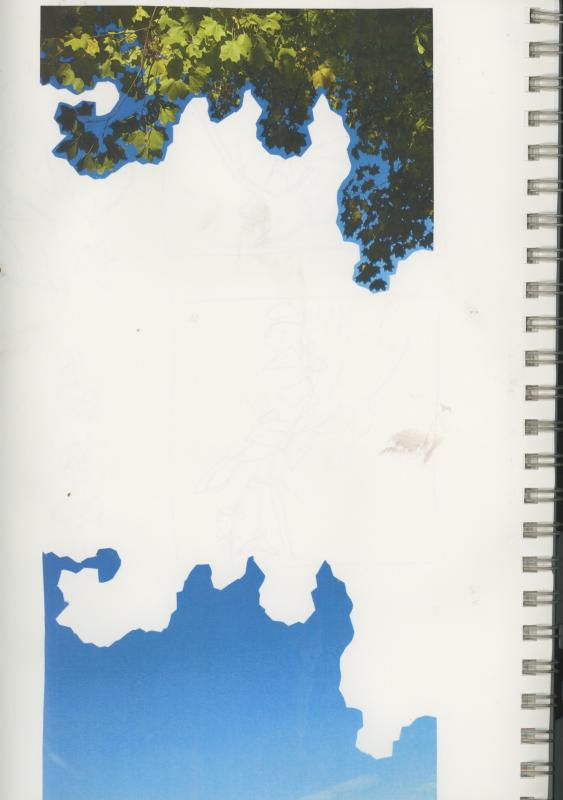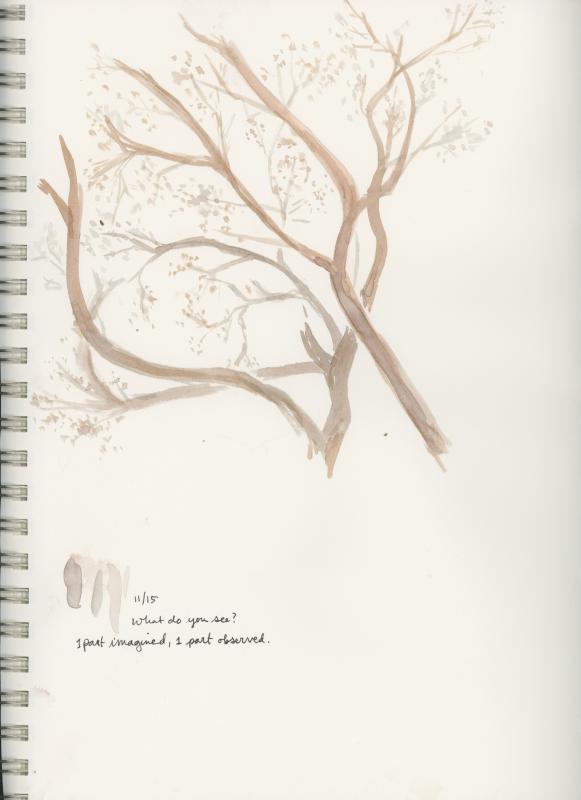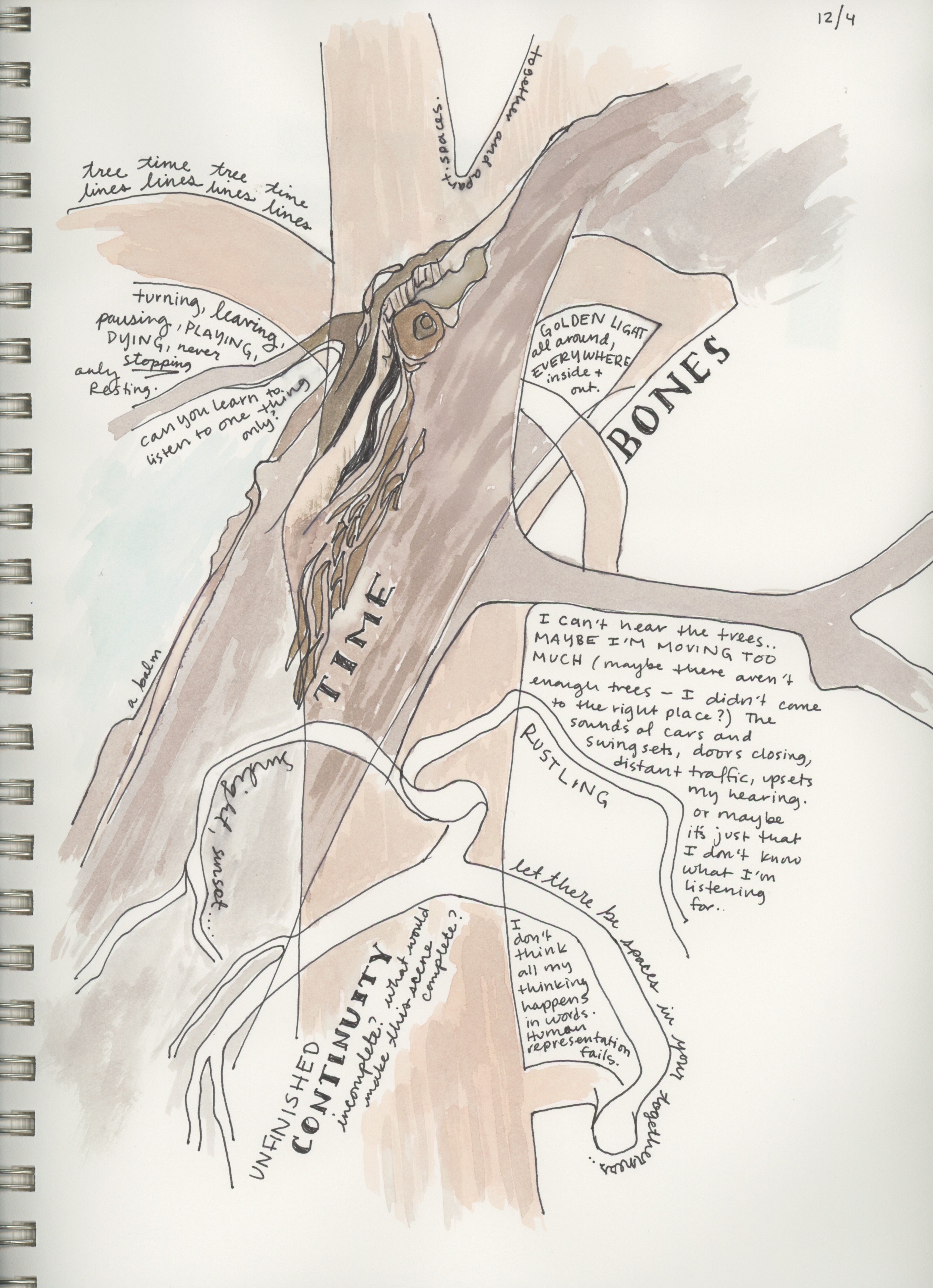Serendip is an independent site partnering with faculty at multiple colleges and universities around the world. Happy exploring!
et502's blog

Rebuilding after Disaster: What makes "sense"?
I'm having a weather-conscious Monday: 2 things happened.
#1. At breakfast, I saw an article on the front page of the Times, "As Coasts Rebuild and U.S. Pays, Repeatedly, the Critics Ask Why." The title pretty much sums up the article - What are we going to learn from Sandy & other weather events? Are we being financially and/or ecologically responsible? (short answer: no.)

- the federal government spends TONS of money on rebuilding coastal properties (one example was Dauphin Island): "Tax money will go toward putting things back as they were, essentially duplicating the vulnerability that existed before the hurricane…. At least $80 million, adjusted for inflation, has gone into patching up this one island since 1979 — more than $60,000 for every permanent resident. That does not include payments of $72 million to homeowners from the highly subsidized federal flood insurance program."

hibernating
Nov. 1...
"I need hibernation in order to create" - Terry Tempest Williams (p.58)
Nov. 8

Nov. 15


recap on geological/botanical tour
Recap on Geological tour: We started at Pem Arch and walked all the way down the hill. The objective was to follow the course that water drains on our campus to its lowest point, Mill Creek, which is behind Batten House. On the way there, students from the E-Sem pointed out certain kinds of local rocks that were used for buildings or other purposes (Wissahickon Schist for Radnor and Denbigh, Baltimore Nice for Merion) - I was really impressed with how much our groupmates knew about this. They showed us maps of floodplains – how creek-beds and the surrounding areas are formed/changed by regular flooding. So when we got to Mill Creek, the floodplain was more observable/noticeable – we were looking for ways that water had affected the area, and we talked about creeks’ natural winding processes which cause some areas in the floodplain to be higher and others to be lower. I hadn’t put much thought into the importance of water and drainage systems when considering geological formations – but this walk changed my perspective.

experience & interpretation
"My constant contact with the street through the scraping of my cane provides me with a direct, uninfluenced connection to visual information" (Carmen Papalia)
After talking about "direct, uninfluenced" experiences in class today, I feel more and more convinced that it is not possible to experience something without its being mediated by a prior experience, a facilitator, a lens, a memory, an expectation. It's quite possible that I've been brainwashed by Dewey and my Critical Issues in Education course, but I keep going back to the idea that every exprience leads to further experiences: “there is some kind of continuity in any case since every experience affects for better or worse the attitudes which help decide the quality of further experiences, by setting up certain preference and aversion, and making it easier or harder to act for this or that end” (Dewey, Experience & Education). In terms of the classroom experience, I do believe that students should have more authority/choice in how they can frame their experiences, but again, I think there will always be a frame of some sort that helps decide what kind of information we take in.
I think this relates to interpretation - so I thought of a statement from Frank Kermode: "Yet the world is full of interpreters... So the question arises why would we would rather interpret than not?" Still thinking about this... looking forward to continuing this discussion in class on Monday.

Radical Garden: Weeds and Wildflowers
“Creation of a society without dominance”
On October 3, I found that an area of my site had been sectioned off from the rest. On the hill behind Arnecliffe, there were little yellow flags, a thin yellow border sprayed on the grass around the space. And inside, the grass was either dead or dying. This was very upsetting. What could possibly be the cause of this removal, this mass extinction?


(note: Ed Harman is the Assistant Director of Grounds at Bryn Mawr)

In anticipation of our Bryn Mawr rambles next week - Wissahickon Schist
Karl Kirchwey came back to campus last year and read this poem:
Wissahickon Schist
What did you think the color of learning was,
if not mica and hornblende flashing in a long-settled gray?
You look for a plane along which it will cleave
to admit the self, but it is you who are divided
always between resolution and doubt,
having read A small amount of fissile material
was smuggled across, remembering certain islands
long ago, the windblown passages between,
wild thyme on the offshore breeze from Lemnos
or the white slash of a coral runway at Tinian.
You open a book to the stories of changing forms
and see the guts of a mole exploded on the lawn,
a red-tailed hawk balanced, nonchalant, on the railing,
and the day's light cut on such a deep bias,

leave no trace?
So in class yesterday, we talked about how we have both liberal and radical feminist movements, but environmentalism is still in its preliminary stages – still reactionary. As Aliza put it, for many people, the environment/nature is a museum. Leaving no trace, experience is limited in many ways to observation, a surface level brush with “the wild.”
This just made me want to interact with my site! What would a radical environmentalism look like?
I saw this documentary a while ago, called Rivers and Tides. It shows the work of Andy Goldsworthy, who calls himself a ‘landscape artist.’ (it’s available through Tripod – it’s a slow-moving film, but it’s worth the time!) Here's an example of his work:

I like this method of "play" with nature, so I tried it out too (not as intense..)
Other notes: today was my 6th visit to my site. I don’t want to move yet – I heard back from Ed Harmon about Grounds’ plans to change some of the space into a wildflower/conservatory area. So I want to be there, at least for a few more weeks, for further developments.

Revising form, and maybe genre?
Original Paragraph (from "Wandering & Wondering," Section IV): I've been thinking about Yeat's poem, Adam's Curse. Just those few lines - about our labor to be beautiful, the construction of beauty. More specifically, I'm thinking about the post-Garden of Eden collapse, of how, in Genesis, all of Creation becomes wild, is infected with sin. It's uncontrolled, it's imperfect and strange. And the human relationship with nature is uncertain, there is a divide. Thrown out of the Garden, we must work the land in order to produce anything beautiful. We must re-define beauty for ourselves - we must re-create whatever we think beauty should be.
Notes/analysis: Since the paper was called “Wandering and Wondering,” I tried to enact those things in my style of writing – not landing on any one point of view or type of writing, not drawing definite conclusions, but leaving room for changes. With this being a series of observations – not personal reflection – I lost a directed commitment to one view over another. So now I’m struggling with deciding on the ‘genre’ for this piece/paragraph. I think it is more tragic than comedic – with the “we” positioned as a kind of hero, a portion of the “Created” that is actively working against “division.”



